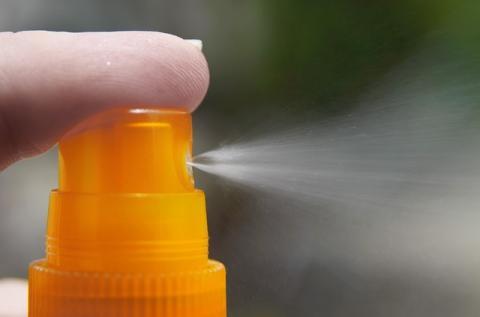
American beautyberry is also known as French mulberry, sour-bush, bunch-berry, and purple beautyberry. The berries grow all throughout the Southeastern USA. Funny enough, it’s actually the leaves and stems that have the most power in warding of bugs in this DIY spray.
Native American tribes have used beautyberry medicinally for many years for various illnesses and ailments. It can be used to treat fevers caused by malaria and rheumatism. The roots are used to treat dizziness, stomachaches, and dysentery. It is also said that the roots and berries boiled into a tea can be used to treat colic.
Farmers back in the 20th century would take beautyberry leaves, crush them up and attach them to the horses’ and mules’ harnesses to repel mosquitoes and other biting insects. They would also crush the leaves and rub them on themselves to keep away the bugs. The Agricultural Research Service conducted several studies that show there are 2 compounds in the beautyberry plant that are natural insect repellents: callicarpenal and intermedeol. On its own, the beautyberry will repel mosquitoes but if you spruce it up you can use it to ward off many biting bugs in the woods.
Beautyberry Bug Spray DIY
Pick about 2 cups worth of beautyberry leaves and stems. Chop them up, and place them in a quart size jar. Cover the herbs with boiling water, and then cover with a lid and leave it to set for 4-6 hours. Strain the liquid and keep it, discarding the plant matter into the compost.
Ingredients:
Witch hazel
1 ounce fractionated coconut oil
½ teaspoon vegetable glycerin
20-40 drops of essential oil (lavender, clove, citronella, and cedar are all good choices)
Directions:
Fill an 8-ounce spray bottle halfway full with the beautyberry juice.
Add witch hazel to the bottle, leaving only about 2 ounces of space between liquid and the top.
I like to give the mixture a little while to settle together before using it.
You can make this recipe without the essential oils. If you wish to leave out the essential oils, I suggest eliminating the vegetable glycerin too.
Not only are beauty berries beautiful to look at, but they also provide medicine, and they feed all sorts of wildlife, too. Birds, opossums, deer, raccoons, and squirrels all love to eat beautyberry. Even cattle can be seen munching on the twigs and leaves in the spring.
It is said the beautyberry is edible, but I have never personally tried it and I suggest doing your research before trying anything new.








